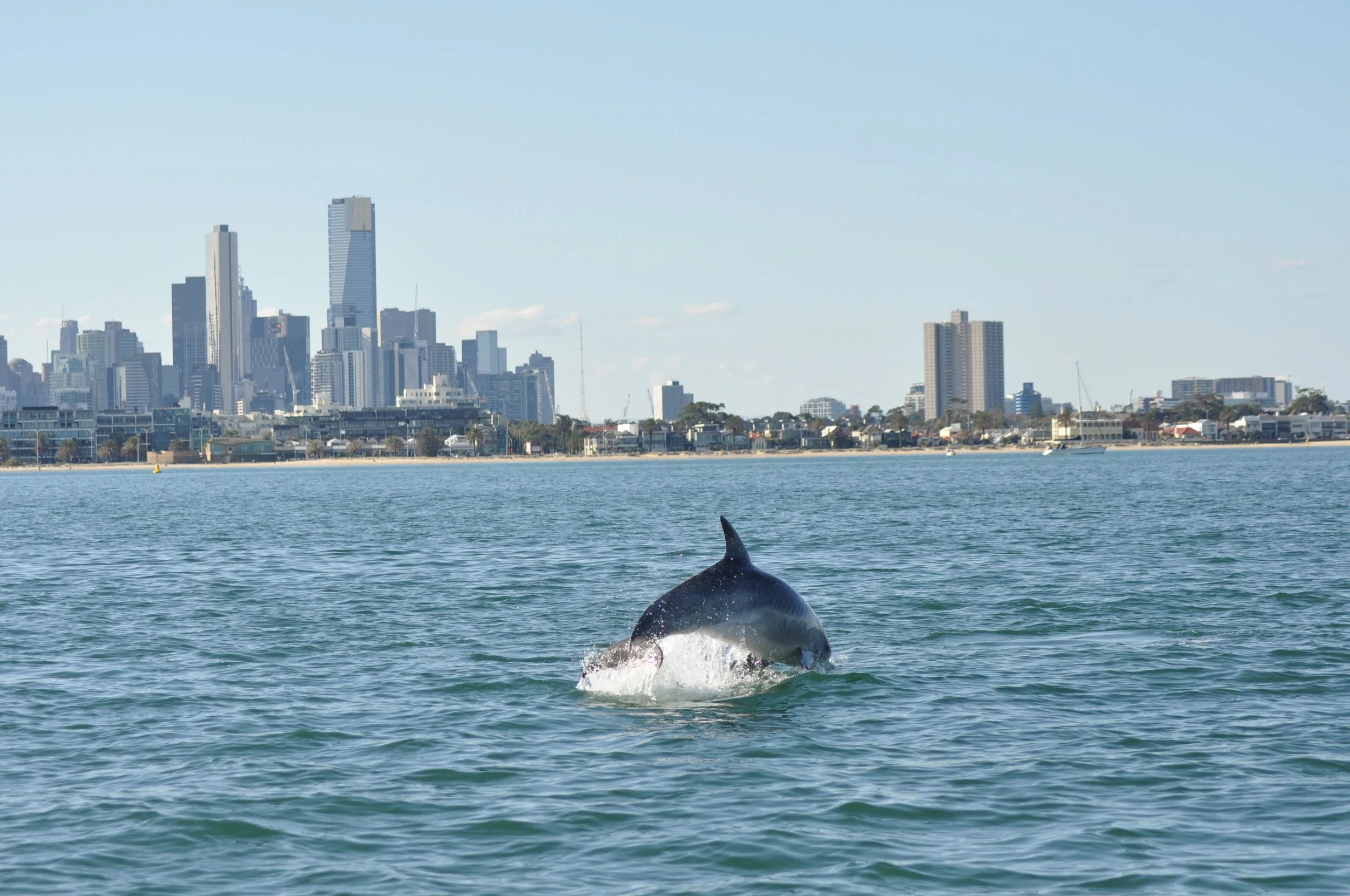
Burrunan Dolphin Population Demographics
The Burrunan dolphin exemplifies small, isolated populations susceptible to numerous threats, including anthropogenic contaminants, commercial and recreation vessels, and environmental change. Our biggest gap in knowledge is the long-term robust population assessment/modelling, by which you can measure population stability, decline or growth and population viability over time, alongside understanding full distribution across the region. All of these aspects are crucial not only for greater understanding of the species, but also for management, mitigation and conservation of the population.
This project revolves around investigating population demographics of both resident populations of the critically endangered Burrunan dolphin, Port Phillip Bay and Gippsland Lakes, to determine each of the population’s size, status and viability.
The two Victorian populations comprise a small, genetically distinct and isolated population of approximately 200 individuals. Individuals are classified as resident as they are frequently sighted during dedicated/year-round seasonal boat-based surveys conducted by the MMF. The Port Phillip Bay population is based on natal philopatry, whereby both males and females remain within their natal range through adulthood, whilst the Gippsland Lakes is maternal based, with mainly females and their calves remaining in the system year-round (Charlton-Robb et al. 2016). This may have important consequences on inbreeding risk due to the isolated and closed nature of the population with very little emigration based on genetic evidence (Charlton-Robb et al. 2016).
Using photographic fin identification data in conjunction with genetic sampling this research will be used to determine population viability through analysing age classes, sex ratio and to establish calving rates to measure population stability. The seasonal/year-round survey design will further allow MMF researchers to also investigate the distribution and help determine possible drivers of distribution.
How do we identify individual dolphins?
MMF researchers use the dolphin’s dorsal fin to identify each individual dolphin. Identifications are based on the naturally occurring nicks and notches found on the dolphin’s dorsal fin, usually on the trailing edge of the dorsal fin, and those markings act like a ‘FINgerprint’. They are born with ‘clean’ fins and gain nicks over time via social behaviour or human-induced causes, such as boat strikes and nets.
When we undertake our boat-based research, we collect thousands of images of the dolphins, then back in the MMF office, we have a strict protocol for processing the photos, so that we can tell which dolphins have been sighted across the seasonal survey period. We also collect underwater footage (via GoPro). From the video footage, we can also assess the fin ID but it is also useful for identifying gender, mother/calf associations and behaviour.
Employing this technique, variables, such as population size and trends, survivorship and calving rate can be measured. This provides a baseline for future efforts in the conservation and management of these resident populations and the species as a whole.
AIMS
Robust abundance estimate for Port Phillip Bay and Gippsland Lakes Burrunan dolphins, using photographic capture-recapture methods applied to fin identification data
Estimate demographic parameters
Assess calving rate and success
Publications
Charlton-Robb, K., Taylor, A.C., McKechnie, S.W. (2016) Population genetic structure of the Burrunan dolphin (Tursiops australis) in coastal waters of south-eastern Australia: conservation implications. Conservation Genetics. DOI 10.1007/s10592-014-0652-6
Conference Presentations
Sondermeyer, N., Arnould, J., Charlton-Robb, K. (2017) Investigating the population structure and social alliances of Tursiops australis in Port Phillip Bay. Poster Presentation. 22nd Biennial Conference on the Biology of Marine Mammals. Halifax, Canada.
Sondermeyer, N., Arnould, J., Charlton-Robb, K. (2017) Investigating the population structure and social alliances of Tursiops australis in Port Phillip Bay. Oral presentation. Victorian Biodiversity Conference. Melbourne.
Henderson, A., Arnould, J., Charlton-Robb, K. (2015) Population Demographics and Seasonal Variation of Tursiops australis in the Gippsland Lakes. Oral presentation. 21st Biennial Conference on the Biology of Marine Mammals. San Francisco, USA.
If you would like to help us get on the water and continue to conduct our research, consider a donation! As a small not-for-profit organisation, every little bit goes a long way.


